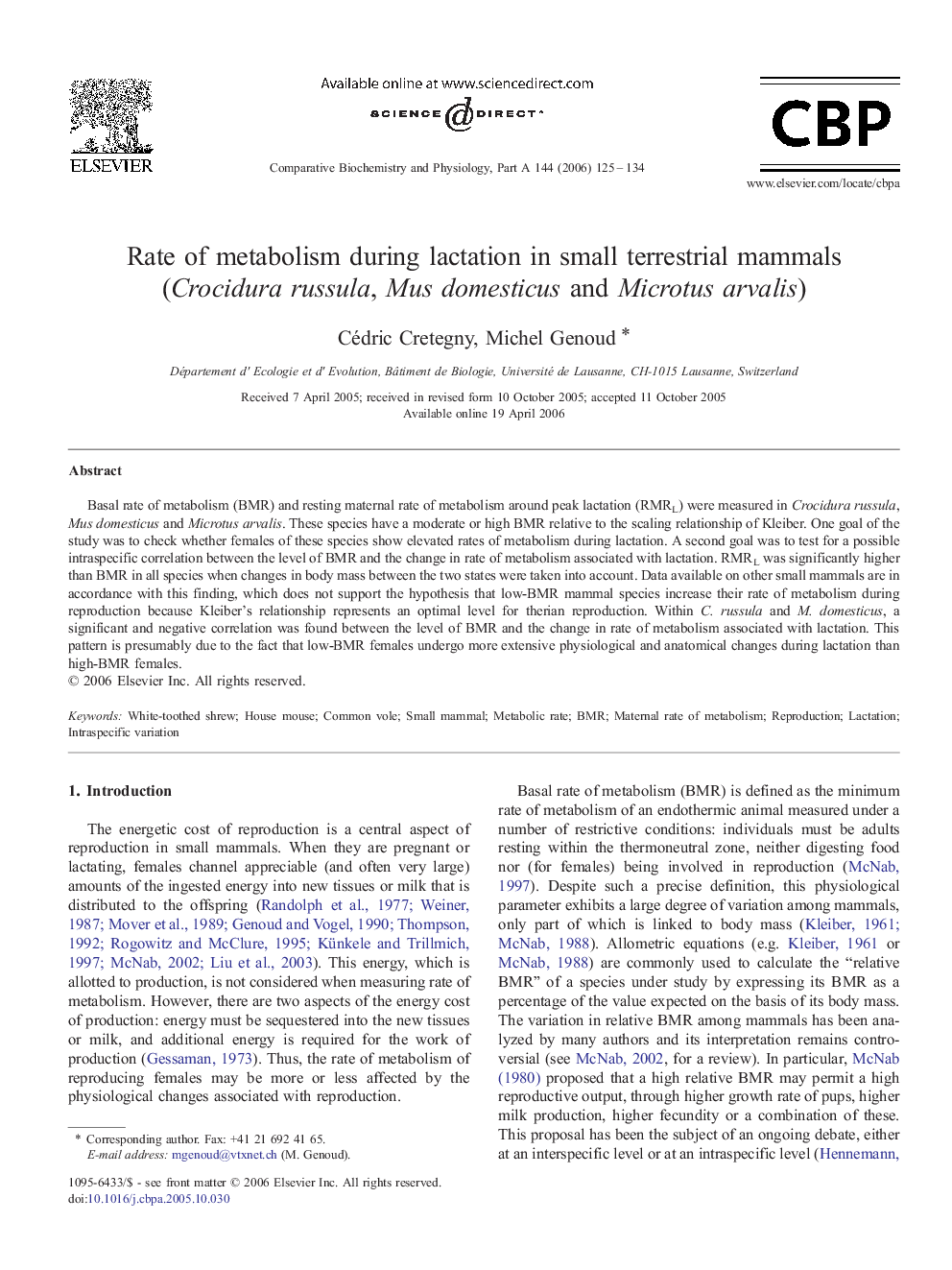| Article ID | Journal | Published Year | Pages | File Type |
|---|---|---|---|---|
| 1973782 | Comparative Biochemistry and Physiology Part A: Molecular & Integrative Physiology | 2006 | 10 Pages |
Basal rate of metabolism (BMR) and resting maternal rate of metabolism around peak lactation (RMRL) were measured in Crocidura russula, Mus domesticus and Microtus arvalis. These species have a moderate or high BMR relative to the scaling relationship of Kleiber. One goal of the study was to check whether females of these species show elevated rates of metabolism during lactation. A second goal was to test for a possible intraspecific correlation between the level of BMR and the change in rate of metabolism associated with lactation. RMRL was significantly higher than BMR in all species when changes in body mass between the two states were taken into account. Data available on other small mammals are in accordance with this finding, which does not support the hypothesis that low-BMR mammal species increase their rate of metabolism during reproduction because Kleiber's relationship represents an optimal level for therian reproduction. Within C. russula and M. domesticus, a significant and negative correlation was found between the level of BMR and the change in rate of metabolism associated with lactation. This pattern is presumably due to the fact that low-BMR females undergo more extensive physiological and anatomical changes during lactation than high-BMR females.
